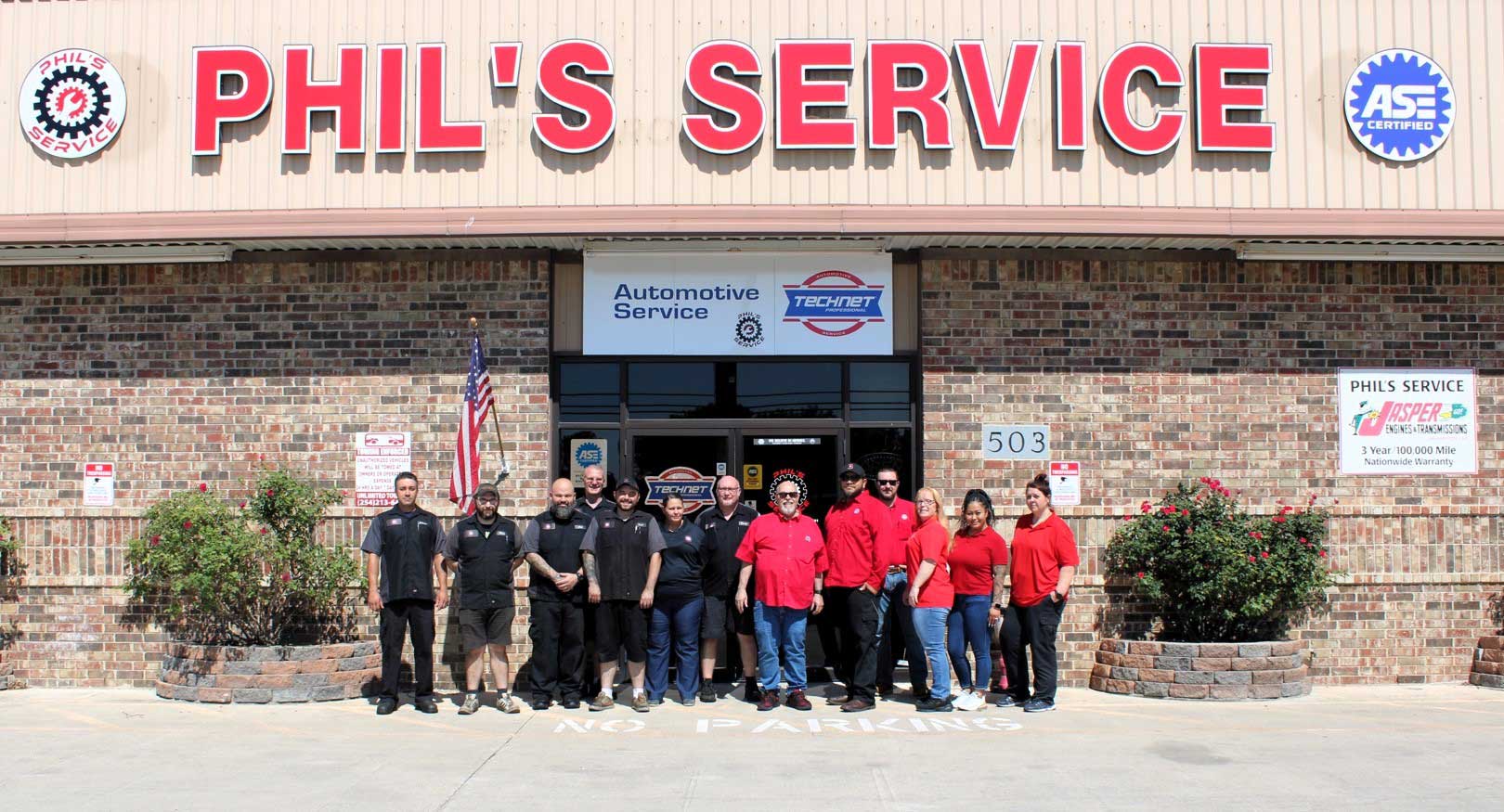How to Fix a Radiator Leak: A Guide From the Experts
When your car's radiator starts leaking, it's a signal you can't ignore. This minor issue can quickly escalate, leading to overheating and potentially serious engine damage. But, there's good news: with the right approach, fixing a radiator leak is manageable and won't break the bank.
It's about knowing when you can handle it yourself and when it's wise to call in a professional. This guide aims to equip you with that knowledge, offering straightforward steps to identify, tackle, and ultimately fix a radiator leak. Whether you're a seasoned DIY enthusiast or considering whether it's time to seek expert help, we're here to guide you through the process.
Let's dive in and learn how to address this common but critical car maintenance issue efficiently.
Understanding Radiator Leaks
Diving into the nitty-gritty of radiator leaks gives us a clear picture of why they happen and why fixing them quickly is more than just a good idea-it's essential. A leaky radiator is like a ticking time bomb for your car's engine, and understanding the culprits can help defuse it before it's too late.
Common Causes of Radiator Leaks
Radiator leaks can sneak up on you, springing from various sources. Corrosion is a silent enemy, eating away at the radiator and eventually creating holes or cracks. Then there's physical damage a rough bump or an unfortunate encounter with road debris that can breach the radiator's defenses. Sometimes, it's as simple as a radiator cap that's lost its mojo, failing to seal properly and letting coolant escape under pressure.
The Urgency of Repair
Let's not mince words: a small leak today can lead to a gusher of problems tomorrow. The coolant's job is to keep your engine cool and happy. Without it, you're looking at overheating and potentially major engine damage. That means big repair bills and a car that's out of commission. Quick fixes not only save your engine but also your wallet from taking a hit.
Getting to grips with the causes and consequences of radiator leaks puts you in the driver's seat, ready to steer your way clear of trouble.
Tools and Materials Needed to Fix a Radiator Leak
When setting out to fix a radiator leak, having the right tools and materials is non-negotiable. Here's what you'll need:
- Coolant
- Radiator Sealant
- Epoxy
- Screwdrivers and Wrenches
- Radiator Hose Clamps
- Gloves and Safety Glasses
The importance of gathering these items cannot be overstated. Each plays a vital role in the repair process, from sealing leaks to ensuring your safety. Proper preparation with these tools and materials not only facilitates a smoother repair experience but also guards against further damage to your radiator or vehicle.
Adequately addressing a radiator leak with the right resources can save you time, money, and the hassle of more significant repairs down the line.
Step-by-Step Guide to Fixing a Radiator Leak
Tackling a radiator leak requires a methodical approach to ensure the repair is effective and lasting. From preparation to the final checks, each step is crucial. Safety is paramount, so don protective gear before you begin. This guide will lead you through identifying and sealing the leak, whether you're opting for a quick fix or a more durable solution.
Preparation and Safety
First, make sure the engine is cool to avoid burns. Drain the radiator by opening the drain valve at the bottom, catching the coolant in a container for proper disposal or reuse. Next, thoroughly clean the area around the leak. This can involve wiping down the radiator's surface and using a cleaner to remove any dirt or grease, ensuring a clean area for a more secure repair.
Identifying the Leak
To find exactly where the leak is coming from, fill the radiator with water and watch for where it seeps out. You might also pressurize the system with a radiator pressure tester to make smaller leaks easier to spot. Once identified, dry the area completely before proceeding to the next step.
Sealing the Leak
For a temporary fix, a commercial radiator sealant can be a quick solution. Follow the product's instructions carefully, usually involving adding the sealant to the coolant and letting the engine run to circulate it through the system. For a more permanent repair, welding or patching the leak might be necessary.
This could involve soldering for metal radiators or applying a specific epoxy for the radiator material.
Testing and Reassembly
After the sealant has set or the patch has cured, it's time to test your work. Refill the radiator with coolant, start the engine, and look for any signs of leaking. If all seems well, reassemble any parts you removed during the repair process. Monitor the repair over the next few days to ensure the leak is truly fixed.
Following these steps carefully will help you address a radiator leak effectively, keeping your vehicle running smoothly and preventing further damage.
When to Call a Professional
While diving into DIY car repairs can be rewarding, there are times when calling a professional auto mechanic is the best course of action. If the radiator leak is due to a complex issue like severe corrosion, or damage to the radiator core, or if it's part of a larger cooling system problem, expert intervention is needed.
Additionally, if after attempting a repair the leak persists or worsens, or if you're not confident in your ability to safely complete the repair, it's time to hand the reins over to a professional. These experts have the tools, knowledge, and experience to diagnose and fix the issue efficiently, ensuring your car is in safe and reliable working order.
Remember, attempting repairs beyond your skill level can lead to further damage, potentially costing you more in the long run.
Navigating Radiator Repairs with Confidence
To fix a radiator leak, addressing the problem quickly is essential, but recognizing when to call a professional is just as important.
At Phil's Service in Killeen, TX, we stand out with our "BEST Spring Forward Maintenance Special," offering up to $600 off services valued at over $1,600, including oil changes, brake inspections, and more. Plus, our free towing within city limits for major repairs adds unbeatable value. If your DIY fix doesn't cut it, it's time to call us.
Choose peace of mind and exceptional service with Phil's Service.
Wondering how to fix a radiator leak for you vehicle? visit our Phil's Service auto shop to ready to help with your Radiator Service.
When your car's radiator starts leaking, it's a signal you can't ignore. This minor issue can quickly escalate, leading to overheating and potentially serious engine damage. But, there's good news: with the right approach, fixing a radiator leak is manageable and won't break the bank.
It's about knowing when you can handle it yourself and when it's wise to call in a professional. This guide aims to equip you with that knowledge, offering straightforward steps to identify, tackle, and ultimately fix a radiator leak. Whether you're a seasoned DIY enthusiast or considering whether it's time to seek expert help, we're here to guide you through the process.
Let's dive in and learn how to address this common but critical car maintenance issue efficiently.
Understanding Radiator Leaks
Diving into the nitty-gritty of radiator leaks gives us a clear picture of why they happen and why fixing them quickly is more than just a good idea-it's essential. A leaky radiator is like a ticking time bomb for your car's engine, and understanding the culprits can help defuse it before it's too late.
Common Causes of Radiator Leaks
Radiator leaks can sneak up on you, springing from various sources. Corrosion is a silent enemy, eating away at the radiator and eventually creating holes or cracks. Then there's physical damage a rough bump or an unfortunate encounter with road debris that can breach the radiator's defenses. Sometimes, it's as simple as a radiator cap that's lost its mojo, failing to seal properly and letting coolant escape under pressure.
The Urgency of Repair
Let's not mince words: a small leak today can lead to a gusher of problems tomorrow. The coolant's job is to keep your engine cool and happy. Without it, you're looking at overheating and potentially major engine damage. That means big repair bills and a car that's out of commission. Quick fixes not only save your engine but also your wallet from taking a hit.
Getting to grips with the causes and consequences of radiator leaks puts you in the driver's seat, ready to steer your way clear of trouble.
Tools and Materials Needed to Fix a Radiator Leak
When setting out to fix a radiator leak, having the right tools and materials is non-negotiable. Here's what you'll need:
- Coolant
- Radiator Sealant
- Epoxy
- Screwdrivers and Wrenches
- Radiator Hose Clamps
- Gloves and Safety Glasses
The importance of gathering these items cannot be overstated. Each plays a vital role in the repair process, from sealing leaks to ensuring your safety. Proper preparation with these tools and materials not only facilitates a smoother repair experience but also guards against further damage to your radiator or vehicle.
Adequately addressing a radiator leak with the right resources can save you time, money, and the hassle of more significant repairs down the line.
Step-by-Step Guide to Fixing a Radiator Leak
Tackling a radiator leak requires a methodical approach to ensure the repair is effective and lasting. From preparation to the final checks, each step is crucial. Safety is paramount, so don protective gear before you begin. This guide will lead you through identifying and sealing the leak, whether you're opting for a quick fix or a more durable solution.
Preparation and Safety
First, make sure the engine is cool to avoid burns. Drain the radiator by opening the drain valve at the bottom, catching the coolant in a container for proper disposal or reuse. Next, thoroughly clean the area around the leak. This can involve wiping down the radiator's surface and using a cleaner to remove any dirt or grease, ensuring a clean area for a more secure repair.
Identifying the Leak
To find exactly where the leak is coming from, fill the radiator with water and watch for where it seeps out. You might also pressurize the system with a radiator pressure tester to make smaller leaks easier to spot. Once identified, dry the area completely before proceeding to the next step.
Sealing the Leak
For a temporary fix, a commercial radiator sealant can be a quick solution. Follow the product's instructions carefully, usually involving adding the sealant to the coolant and letting the engine run to circulate it through the system. For a more permanent repair, welding or patching the leak might be necessary.
This could involve soldering for metal radiators or applying a specific epoxy for the radiator material.
Testing and Reassembly
After the sealant has set or the patch has cured, it's time to test your work. Refill the radiator with coolant, start the engine, and look for any signs of leaking. If all seems well, reassemble any parts you removed during the repair process. Monitor the repair over the next few days to ensure the leak is truly fixed.
Following these steps carefully will help you address a radiator leak effectively, keeping your vehicle running smoothly and preventing further damage.
When to Call a Professional
While diving into DIY car repairs can be rewarding, there are times when calling a professional auto mechanic is the best course of action. If the radiator leak is due to a complex issue like severe corrosion, or damage to the radiator core, or if it's part of a larger cooling system problem, expert intervention is needed.
Additionally, if after attempting a repair the leak persists or worsens, or if you're not confident in your ability to safely complete the repair, it's time to hand the reins over to a professional. These experts have the tools, knowledge, and experience to diagnose and fix the issue efficiently, ensuring your car is in safe and reliable working order.
Remember, attempting repairs beyond your skill level can lead to further damage, potentially costing you more in the long run.
Navigating Radiator Repairs with Confidence
To fix a radiator leak, addressing the problem quickly is essential, but recognizing when to call a professional is just as important.
At Phil's Service in Killeen, TX, we stand out with our "BEST Spring Forward Maintenance Special," offering up to $600 off services valued at over $1,600, including oil changes, brake inspections, and more. Plus, our free towing within city limits for major repairs adds unbeatable value. If your DIY fix doesn't cut it, it's time to call us.
Choose peace of mind and exceptional service with Phil's Service.


